|
Paul Deckret
Enzanso: 100 Years as One of Japan's Best Mountain Huts

The beautiful and beloved Enzanso mountain hut, located on a ridge near the summit of Mt. Tsubakuro in the Northern Alps, is celebrating its 100th anniversary this year. In this article, we'll explore some of the hut's storied history as well as a few of the secrets to its success that have kept climbers coming back again and again for the last century and counting.
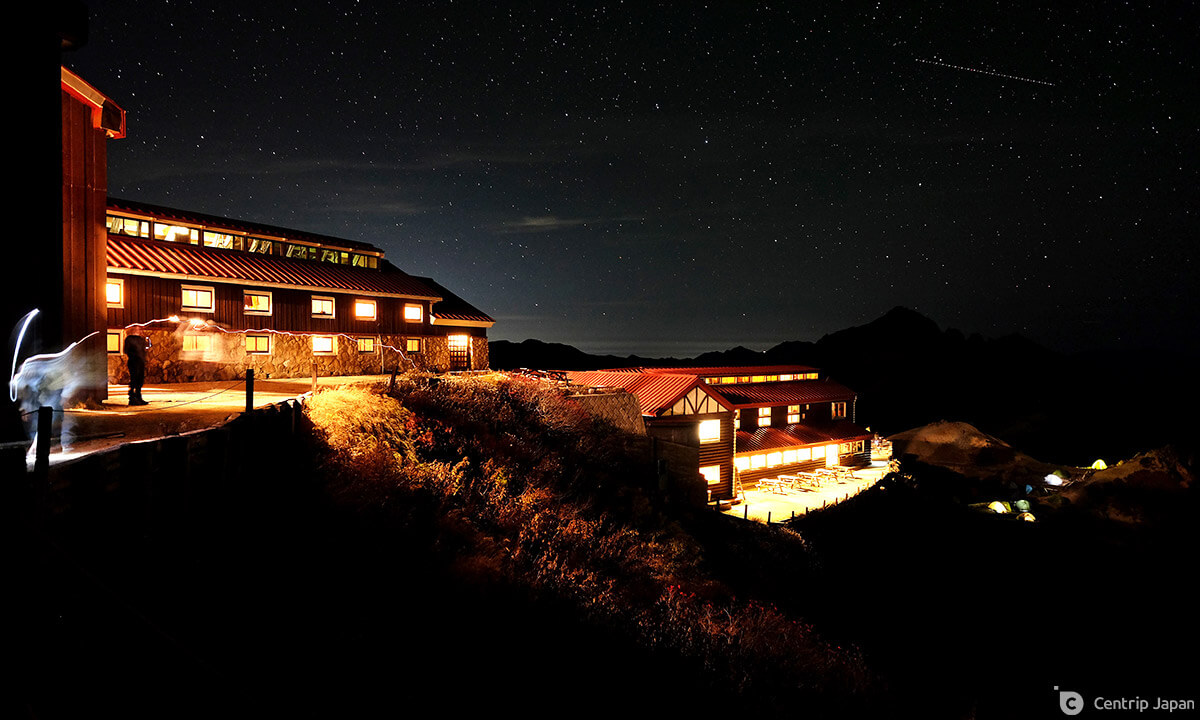 The Enzanso mountain hut and tents of the adjacent campground lit up under the starry night sky
The Enzanso mountain hut and tents of the adjacent campground lit up under the starry night sky
The Evolution of Hiking and Huts in Japan
Though hiking is an increasingly popular pastime in modern Japan, with an estimated 10% of the population engaging in the activity, that hasn't always been the case. For most of history, mountains here were thought of as wondrous, sacred places to be revered from afar. When they were scaled, it was almost always in the service of religion. The transition from climbing as a spiritual pursuit to one of exploration and sport began in earnest at the end of the 19th century and was ushered in large part by Europeans employed by the Meiji government to aid the country's efforts at modernization.
 The final climb to Enzanso on approach from Nakabusa Onsen
The final climb to Enzanso on approach from Nakabusa Onsen
Today there are upwards of 80 mountain huts in the Northern Alps alone, but prior to the introduction of mountaineering as a form of recreation, mountain huts as we know them today simply didn't exist; those shelters that did were extremely basic affairs built for temporary or seasonal use by hunters and loggers. In the early 1900s, as books and magazines began to publish accounts of domestic alpinism and as Japan's first Alpine Club was formed (1905), general interest in the Japan Alps began to slowly increase. It would be almost two more decades before the mountain climbing boom really got started, but little by little simple lodgings to accommodate climbers began to be erected in anticipation of what was to come.
Enzanso: A Pioneering and Popular Hut
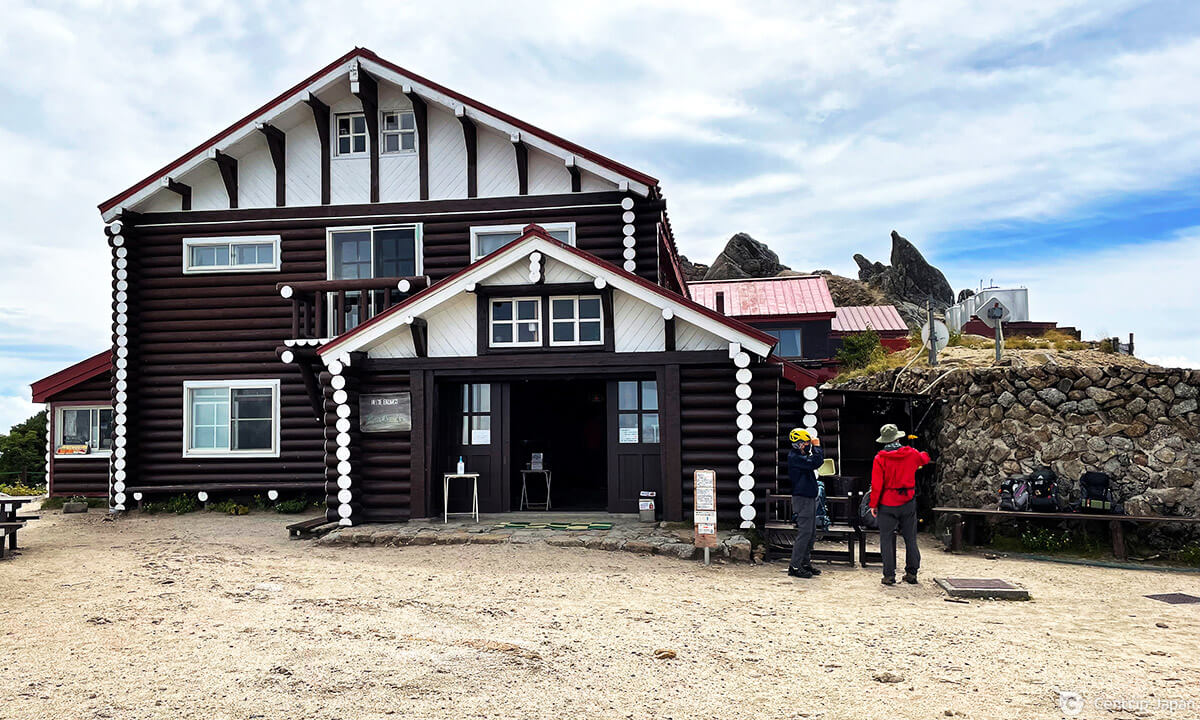 A view of Enzanso's beautiful and spacious main entrance
A view of Enzanso's beautiful and spacious main entrance
Enzanso was one of the earliest huts constructed in this area of the Alps. It was conceived and financed by mountaineer Chihiro Akanuma and completed in 1921; preceded only by the Yarisawa lodge in 1918 and the Jonen hut in 1919. Over the years it has undergone several renovations and expansions, reinventing itself from a quaint, modest structure with space for 50 people, to the large, proud facility that now features multiple interconnected buildings and sleeps up to 650 guests.
Enzanso's ever-growing footprint has only been outpaced by its exploding reputation as one of Japan's best and favorite mountain huts. Year after year, in surveys conducted by outdoor publications and online sites, it has consistently ranked at or near the top in a variety of categories such as 'Favorite Mountain Hut,' 'No. 1 Hut Hikers Want to Stay At' and 'No. 1 Hut Hikers Are Happy They Stayed At.' There are plenty of explanations for its enduring and increasing popularity, but let's take a look at some of the main ones.
The Secrets to Enzanso's Success
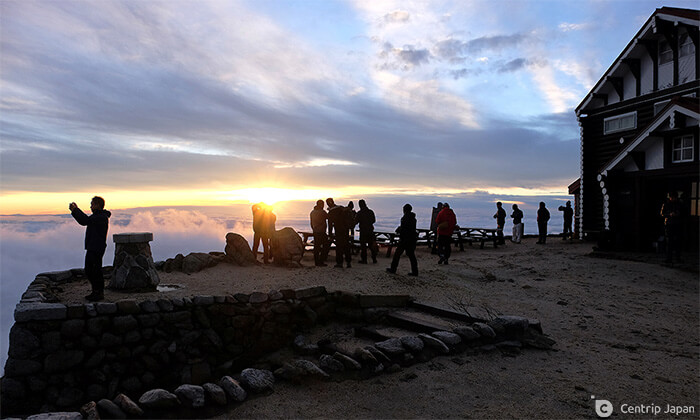

It should be noted that the thoughts listed below are based largely on my personal experience and observations, as someone who has spent nearly 20 years hiking throughout the Northern Alps. For simplicity, I've organized my impressions into four main categories: scenery, setting, service, and style, with each one further broken down into a few subcategories. Let's take a closer look at each.
The Beautiful Scenery
Majestic Mt. Tsubakuro
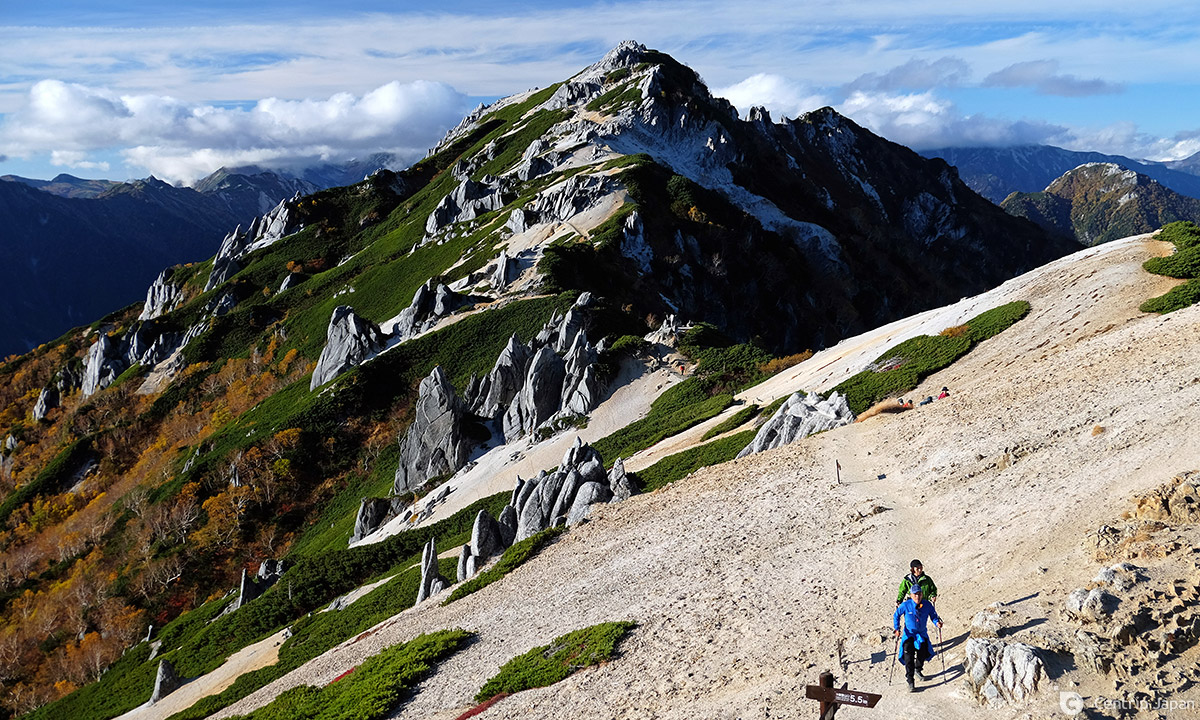 A couple arriving back at the Enzanso hut after the 2km out-and-back hike to the peak of Mt. Tsubakuro
A couple arriving back at the Enzanso hut after the 2km out-and-back hike to the peak of Mt. Tsubakuro
Enzanso lies at an elevation of 2,712m on the crest of a ridge just 1km from the picturesque 2,763m peak of Mt. Tsubakuro. Large, natural sculptures of weathered granite and avenues of fine white sand line the trail to the summit, making it an exceedingly scenic, unique, and memorable mountain. Tsubakuro is famous in fact for several spires of rock that are said to resemble the shapes of animals or other features; primarily its 'dolphin rock' and 'glasses rock'. These distinctive features and majestic qualities have earned Tsubakuro the nickname, "Queen of the Northern Alps."
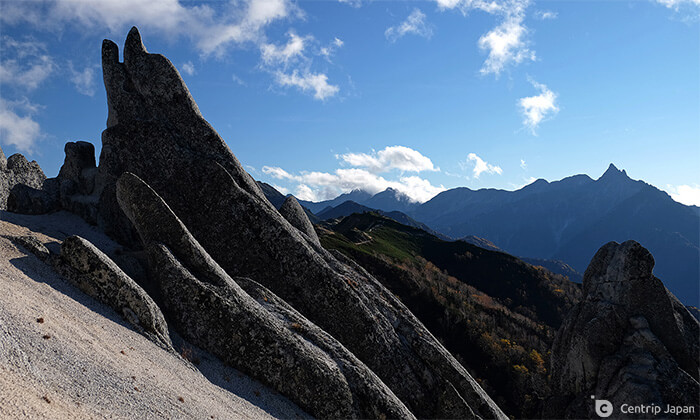 Tsubakuro's famous "dolphin"
Tsubakuro's famous "dolphin"
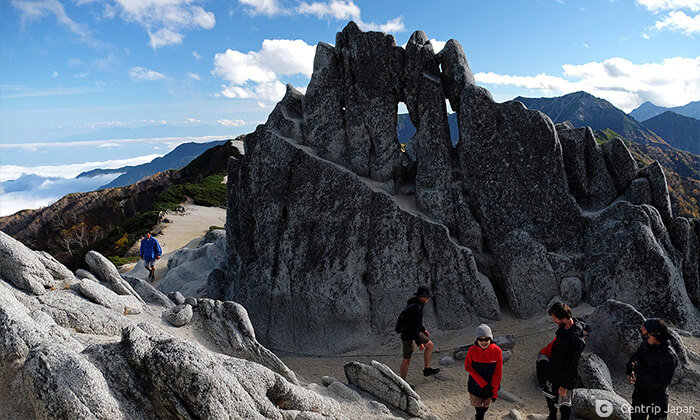 "Glasses" rock formations sit alongside the trail to the summit
"Glasses" rock formations sit alongside the trail to the summit
Stunning 360-Degree Panoramic Views
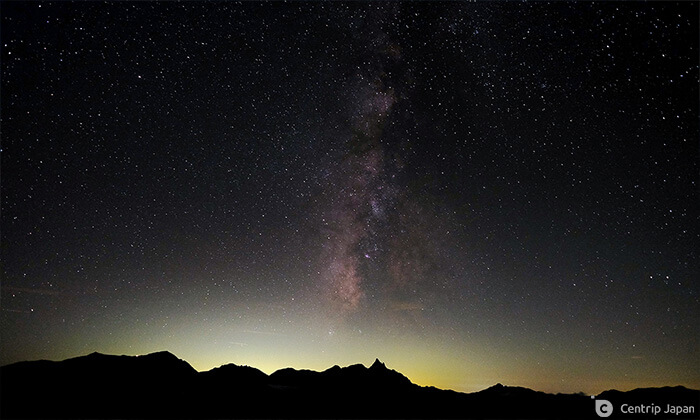
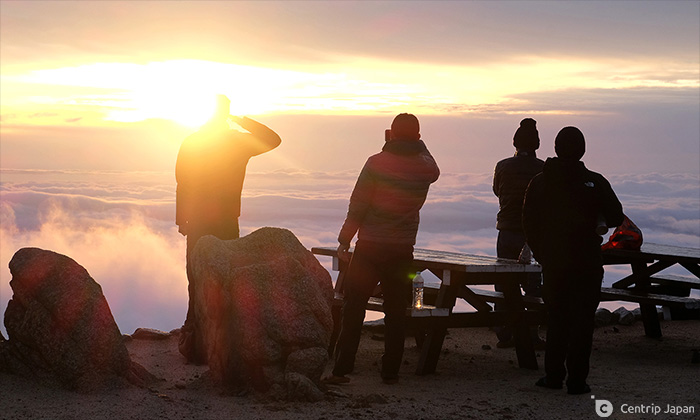
Aside from the one-of-a-kind topography of Mt. Tsubakuro, the scenic beauty around Enzanso literally extends in every direction. The panoramic vistas of surrounding mountains near and far, as well as the cities, settlements, and rice fields below, are breathtaking. Most often visitors' eyes are drawn to the west, where the imposing and awe-inspiring 3,000m peaks of the Hotaka Mountain Range tower over the landscape. Chief amongst them is one of Japan's most iconic and visually-impressive summits; 3,180m Mt. Yari, also known as "the Matterhorn of Japan" for its sharp, rocky prominence that is on full display from Enzanso.
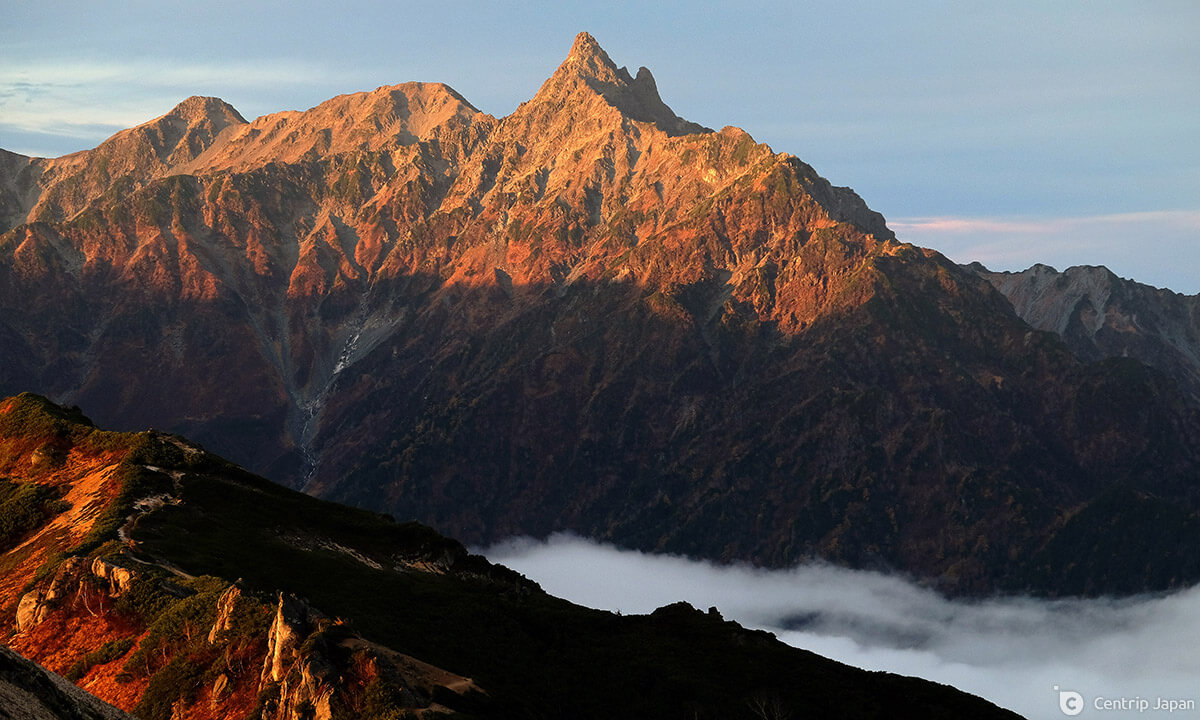 Mt. Yari is one of Japan's most recognizable mountains, second perhaps to only Mt Fuji
Mt. Yari is one of Japan's most recognizable mountains, second perhaps to only Mt Fuji
Rare Alpine Flora and Fauna
The overwhelming scale and grandeur of the Northern Alps are only one part of the beauty that can be experienced around Enzanso. The hut is located in the middle of a Specially Protected Area designated as such in an effort to preserve the rare and unique alpine plants and animals that thrive here.
While a wide variety of alpine flowers bloom in the vicinity of the hut, the most special is known as komakusa. These rare, delicate flowers endemic to the mountains of Japan grow in great abundance in the fine granite sands between the hut and the summit of Mt. Tsubakuro in midsummer. Their vibrant pink petals and lush green stems contrast nicely with the subtle shades of the brown and gray earth from which they emerge. If you're lucky, you may even be able to spot a cluster of the scarce white komakusa.
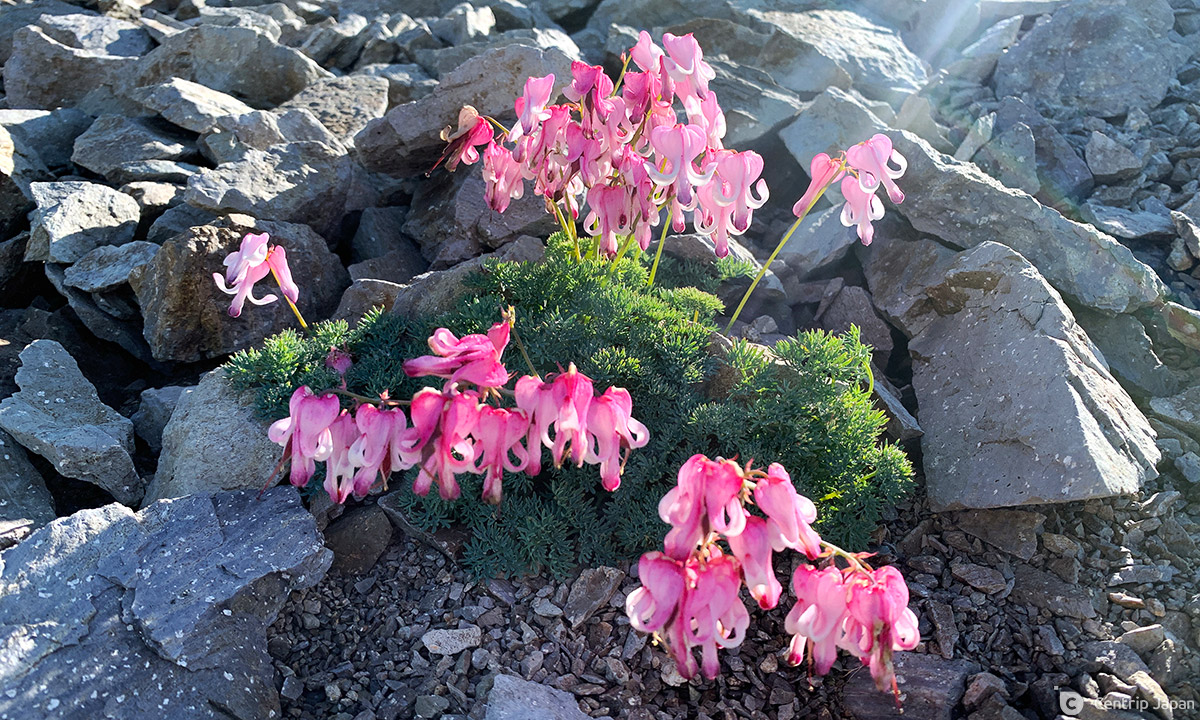 Komakusa are known in Japan as the "Queen of Alpine Flowers"
Komakusa are known in Japan as the "Queen of Alpine Flowers"
In terms of area wildlife, raicho (Japanese Rock Ptarmigan) are the most adored. Raicho is written as 雷鳥 and translates literally to "thunderbird." They are the direct descendants of a population of ptarmigan that migrated south to Japan during the last ice age and settled permanently in the high alpine areas across the country's mountainous central region. Sightings are generally a cause for great excitement amongst local hikers, as the number of birds has been steadily declining due to the effects of climate change, human interference, and an increasing number of predators. Yet they live and nest nearby and are frequently spotted around Enzanso.
 A solitary male raicho with spring plumage stands lookout alongside the hiking trail
A solitary male raicho with spring plumage stands lookout alongside the hiking trail
The Prime Setting
While the climb up to Enzanso and Mt. Tsubakuro can be done as a tough day hike from the Nakabusa Onsen trailhead, the area is often visited as an overnight stop at the beginning of two of the most well-known and most spectacular multi-day hiking routes in the Northern Alps: Omote Ginza and Panorama Ginza. This prime position at the start of two major routes has no doubt played a part in Enzanso's success.
The Omote Ginza Route
 Trekkers heading towards distant Mt. Yari at the start of the Omote Ginza route
Trekkers heading towards distant Mt. Yari at the start of the Omote Ginza route
Scenic Omote Ginza stretches from Mt. Tsubakuro to Mt. Yari and is usually done as a 4-day / 3-night trek overnighting at the Enzanso, Hutte Nishi-Dake, and Yarigatake Sanso huts. In fact, the Omote Ginza route is the only approach route to Yari that starts in Nagano Prefecture, and the emerging popularity of Mt. Yari at the turn of the 20th century and the subsequent need for lodging en route are a big part of what ultimately led to the construction of Enzanso.
The Panorama Ginza Route
 Taking a break near the summit of Mt. Jonen (常念岳) while traversing the Panorama Ginza trail
Taking a break near the summit of Mt. Jonen (常念岳) while traversing the Panorama Ginza trail
The first 8 kilometers of the Panorama and Omote Ginza routes are on the same trail, starting at Nakabusa Onsen and passing through Enzanso, before continuing south along the ridge in the direction of Mt. Otensho. The trail splits just before the final ascent to the summit of Otensho: heading right for Omote Ginza and Mt. Yari, keeping left for Panorama Ginza and Mt. Cho. While Panorama Ginza doesn't take you to the summit of Yari itself, it keeps you moving parallel and ever closer to the impressive pointy peak.
The Excellent Service
Splendid scenery and special settings are characteristics of many mountain huts across central Japan, but what really sets Enzanso apart from all the others is the outstanding level of service.
Heartfelt Hospitality
 The dining area seen here is a beautiful, bright, and vibrant space for enjoying a meal or spending time with other hikers
The dining area seen here is a beautiful, bright, and vibrant space for enjoying a meal or spending time with other hikers
Enzanso is still owned and operated by the Akanuma family, with the current owner being the third generation to run the hut. Despite the company's head office being located in Matsumoto, the owner maintains a very active presence in the hut and is often there to greet customers at check-in, play an impromptu Alphorn concert, or just generally guide and encourage his employees. The company motto is "Akaruku tanoshii" which translates to "bright and fun" and summarizes the atmosphere perfectly. Staff are trained in providing the best possible customer service and an unusually strong emphasis is placed on cleanliness. This dedication to guest hospitality surpasses expectations and makes Enzanso feel less like a mountain hut and more like a hotel.
Fantastic Food

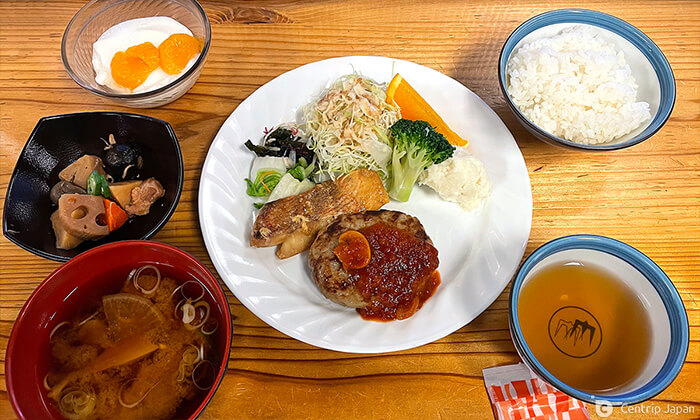
One important aspect of service for any accommodation is the quality of the food. As someone who has stayed at Enzanso a number of times, I can honestly say I've never had a meal there I didn't enjoy. Not only are the standard dinners and breakfasts filling and tasty, but the offerings for lunch and dessert are equally great. One of the things that Enzanso is known for is its cake and coffee sets, where customers can choose from several varieties of cake and pair it with hot or iced coffee. Most people will tell you that one of the joys of climbing mountains is that anything and everything tastes great at the top, but when that something is cheesecake and coffee - the joy is almost indescribable.
 Pork cutlet curry lunch plate
Pork cutlet curry lunch plate
 Coffee and cake dessert set with a view
Coffee and cake dessert set with a view
The Unmatched Style
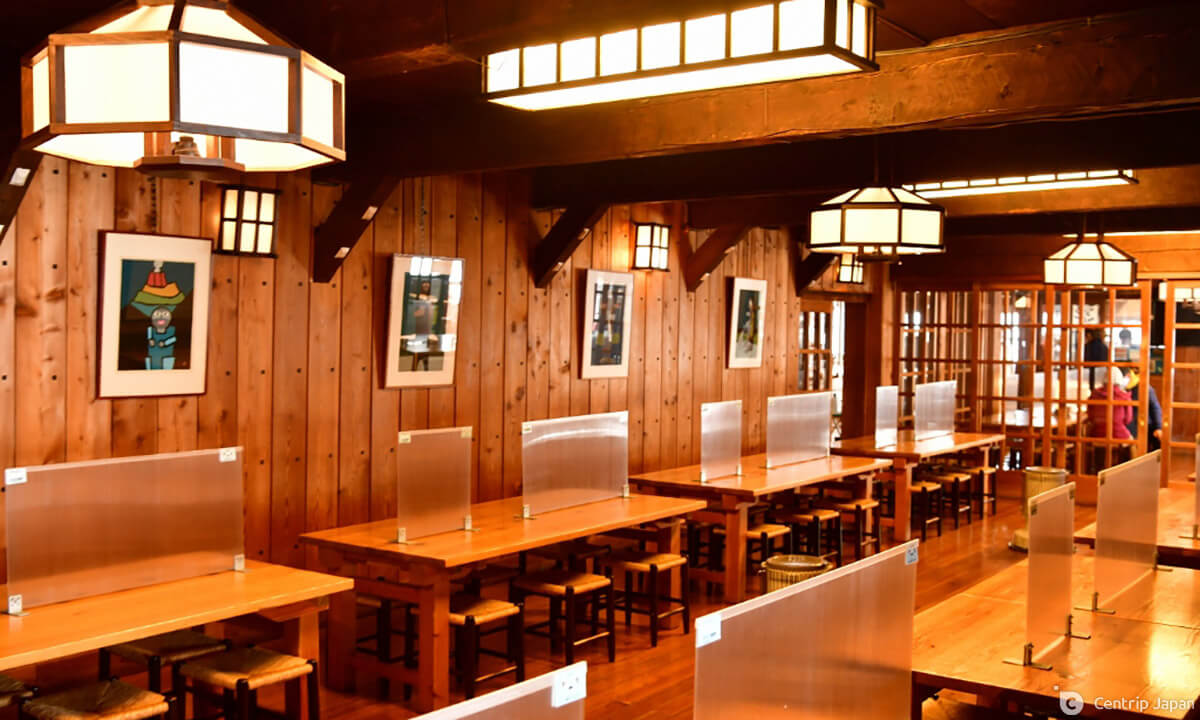 The simple yet elegant styling of the dining hall leaves an impression on visitors [Photo courtesy of Enzanso Group]
The simple yet elegant styling of the dining hall leaves an impression on visitors [Photo courtesy of Enzanso Group]
Elegant Design and Construction
 Dormitory-style bunk beds in a standard guest room
Dormitory-style bunk beds in a standard guest room
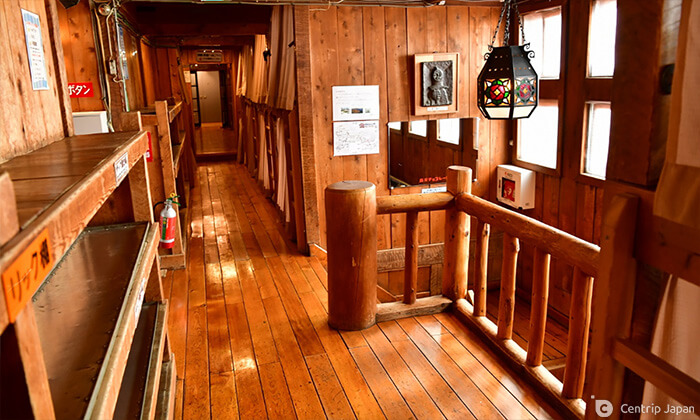 A hallway between rooms
A hallway between rooms
Simply put, Enzanso is a beautifully-constructed hut. During the reconstruction of the main building into its current form in 1935, a variety of top architects were consulted and great pride was taken in the planning and construction. The result of those efforts has stood the test of time, and Enzanso remains a sight to behold. Each additional add-on in the years since has managed to remain the same character as the original design and everything blends seamlessly throughout, from the guest rooms to the sunroom, from the dining hall to the hallways.
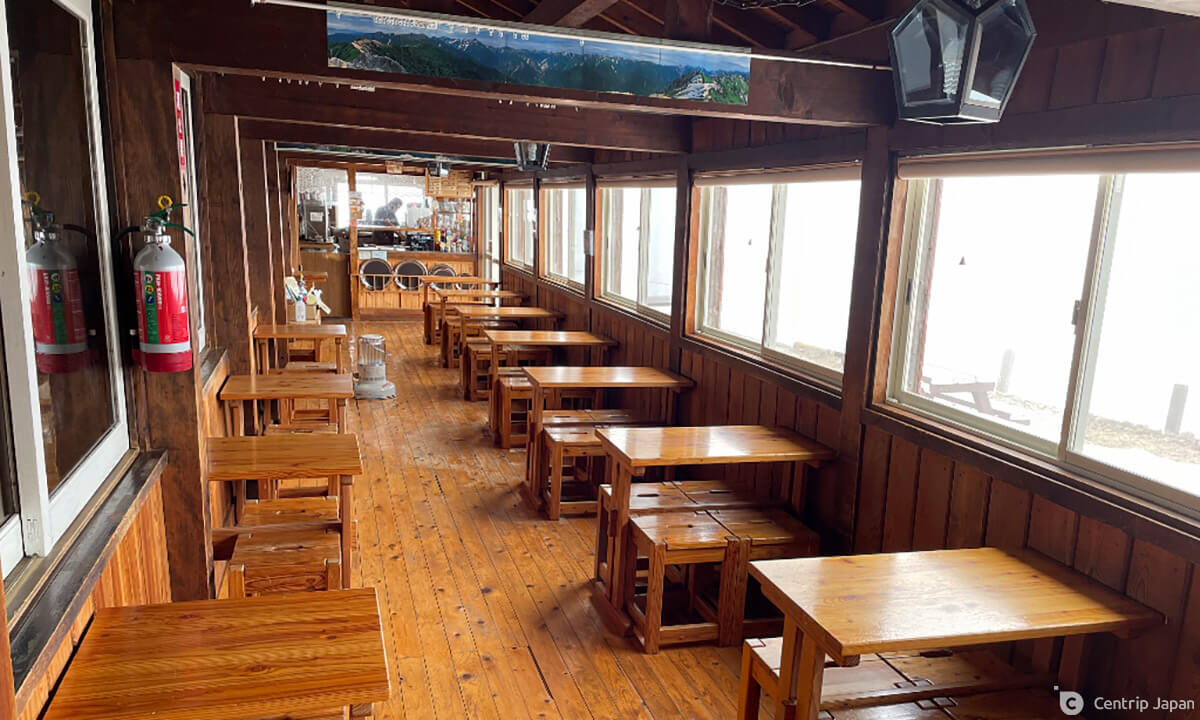 The sunroom/cafe space has large picture windows that look out across Azumino [Photo courtesy of Enzanso Group]
The sunroom/cafe space has large picture windows that look out across Azumino [Photo courtesy of Enzanso Group]
 Frames display some of the T-shirts and 'tenugui' towels available for purchase [Photo courtesy of Enzanso Group]
Frames display some of the T-shirts and 'tenugui' towels available for purchase [Photo courtesy of Enzanso Group]
The sense of artistic style goes beyond the building itself and can be seen in both the artwork adorning the walls and the expansive Enzanso-branded goods for sale in the hut's shop. Much of what you see displayed and available for purchase is the work of the artist Umetaro Azechi, a renowned printmaker with a distinct style whose works are displayed in major museums around the world. Azechi was an avid hiker and formed a close relationship with the hut, and his bold and primitive prints have become almost synonymous with Enzanso.
Accessing Enzanso
Getting to Enzanso from the Nagoya area can be broken down into three parts: getting to Azumino City, onward transport to the Nakabusa Onsen trailhead, and the hike up to the hut itself.
Getting to Azumino
When heading to Azumino to climb up to Enzanso and Mt. Tsubakuro, the best point of access is Hotaka Station. The fastest and easiest way to get there from Nagoya is to take the Limited Express Wide-View Shinano on the JR Line to Matsumoto Station and transfer to a train bound for Shinano-Omachi on the Oito Line. It takes roughly 3 hours and costs just under ¥7,000 each way. Slower trains or a combination of bus and train are cheaper but take more time. The earliest departure leaves Nagoya at 7:00 a.m. and arrives at Hotaka Station at 9:50 a.m.
Getting to Nakabusa Onsen
Nakabusa Onsen is reached from Hotaka Station via bus or taxi. The distance to the trailhead from the station is 21 kilometers and takes around 50 minutes to drive the long, windy mountain road. Taxis cost around ¥8,500 to make the trip, while the bus is ¥1,800. The number of buses and departure times vary according to the season, so it's best to do a search online for the most up-to-date schedule. For reference, this is a link to the 2021 schedule (PDF).
Hiking to Enzanso
The hike to Enzanso starts at around 1,450m of elevation at Nakabusa Onsen and quickly climbs 1,250m over a distance of 5 kilometers to the ridge and the hut. The path itself is steep, but well maintained and is free of any technical hazards. There are benches to rest at multiple points along the way, and the Kassen Hut located around 3km from the start and 2km from Enzanso is a great place to take a break and stock up on food and drinks if necessary. The standard Yamatokogen hiking maps list the recommended course time as just under 4 and a half hours, but estimating between 5 and 6 hours is a good way to eliminate any surprises.
Click here to get the latest information on Central Japan.Centrip Japan - Nagoya and Chubu Information

